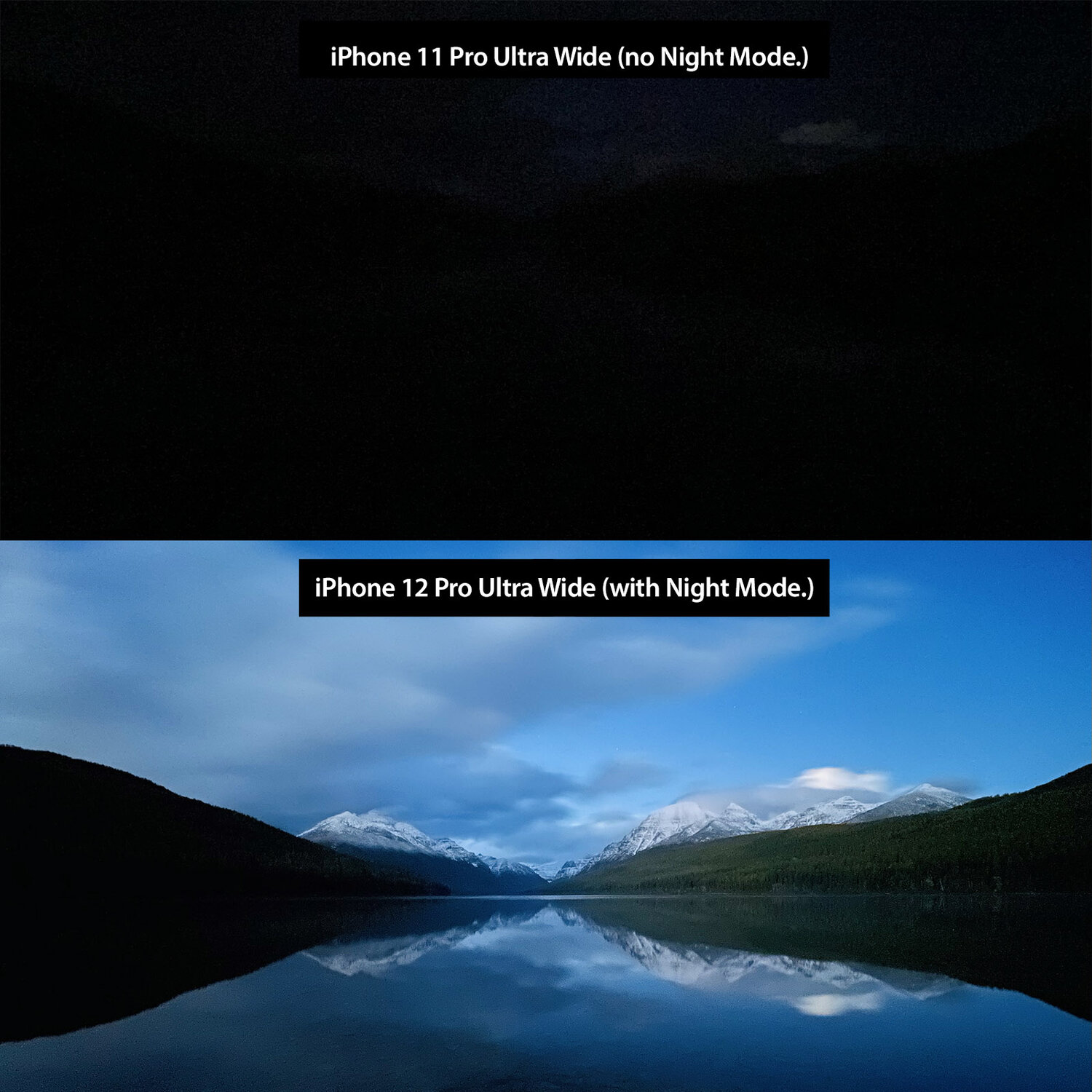![]()
Travel photographer Austin Mann
usually performs an in-depth review of new iPhone models to test their camera performance in real-world scenarios. To test Apple's new iPhone 12 Pro, Mann
traveled to Glacier National Park, Montana.
Mann focused on some of the biggest camera upgrades with the iPhone 12 Pro, including the upgraded Wide lens, Ultra Wide Night mode, and LiDAR autofocus, across a range of conditions and environments.
The upgraded 26mm Wide angle lens with a f/1.6 aperture performed better in low light, according to Mann. In a 30-second exposure shot with almost no visible light (above), he found that Night mode and the Wide lens worked extremely well together.
When investigating the new seven-element Wide lens for better edge-to-edge sharpness, Mann shot images with lots of detail in the corners of the frame, but did not see better results than on the iPhone 11 Pro.
On the other hand, Mann observed that Night mode on the Ultra Wide lens significantly improved low-light performance. Where the iPhone 11 Pro's Ultra Wide lens produced a mostly black frame that was full of noise, the iPhone 12 Pro delivered an immeasurably improved clear image.
He found that the low-light improvements to the Ultra Wide also made indoors photography with the lens much more viable and crisp.
Mann noted reasonable improvements with Smart HDR 3, but the more striking difference was seen in taking portraits with Night mode. After sunset with very little available light, the computational improvements of better OIS, faster ISO, and LiDAR, allowed the portrait to remain surprisingly color accurate and sharp.
Mann found that the LiDAR Scanner significantly improved low-light portraits, with the focus locking to the subject's face and creating an accurate depth map where needed.
Elsewhere, Mann praised a range of minor software improvements. In particular, he appreciated that it is now possible to lock exposure adjustment without it reverting to auto mode every time a picture is captured or when switching between lenses. This allows the iPhone 12 Pro to behave much more like a manual camera.
See Mann's
full report for more images and additional information about the technical capabilities of the iPhone 12 Pro's camera setup.
Article Link:
Photographer Austin Mann Tests the iPhone 12 Pro's Camera







